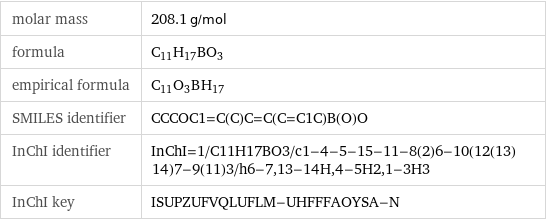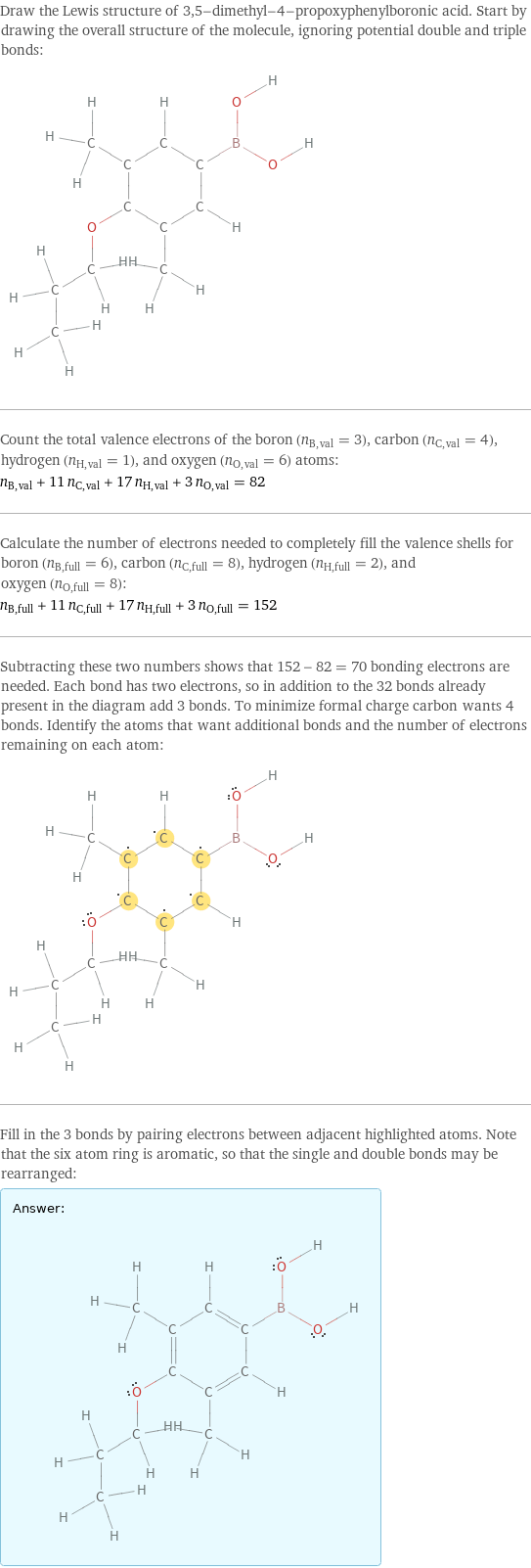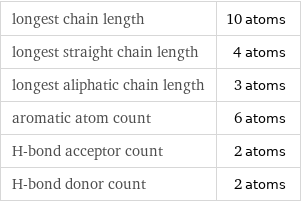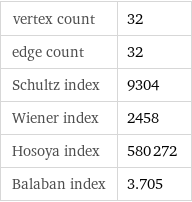Input interpretation

3, 5-dimethyl-4-propoxyphenylboronic acid
Basic properties

molar mass | 208.1 g/mol formula | C_11H_17BO_3 empirical formula | C_11O_3B_H_17 SMILES identifier | CCCOC1=C(C)C=C(C=C1C)B(O)O InChI identifier | InChI=1/C11H17BO3/c1-4-5-15-11-8(2)6-10(12(13)14)7-9(11)3/h6-7, 13-14H, 4-5H2, 1-3H3 InChI key | ISUPZUFVQLUFLM-UHFFFAOYSA-N
Lewis structure

Draw the Lewis structure of 3, 5-dimethyl-4-propoxyphenylboronic acid. Start by drawing the overall structure of the molecule, ignoring potential double and triple bonds: Count the total valence electrons of the boron (n_B, val = 3), carbon (n_C, val = 4), hydrogen (n_H, val = 1), and oxygen (n_O, val = 6) atoms: n_B, val + 11 n_C, val + 17 n_H, val + 3 n_O, val = 82 Calculate the number of electrons needed to completely fill the valence shells for boron (n_B, full = 6), carbon (n_C, full = 8), hydrogen (n_H, full = 2), and oxygen (n_O, full = 8): n_B, full + 11 n_C, full + 17 n_H, full + 3 n_O, full = 152 Subtracting these two numbers shows that 152 - 82 = 70 bonding electrons are needed. Each bond has two electrons, so in addition to the 32 bonds already present in the diagram add 3 bonds. To minimize formal charge carbon wants 4 bonds. Identify the atoms that want additional bonds and the number of electrons remaining on each atom: Fill in the 3 bonds by pairing electrons between adjacent highlighted atoms. Note that the six atom ring is aromatic, so that the single and double bonds may be rearranged: Answer: | |
Quantitative molecular descriptors

longest chain length | 10 atoms longest straight chain length | 4 atoms longest aliphatic chain length | 3 atoms aromatic atom count | 6 atoms H-bond acceptor count | 2 atoms H-bond donor count | 2 atoms
Elemental composition

Find the elemental composition for 3, 5-dimethyl-4-propoxyphenylboronic acid in terms of the atom and mass percents: atom percent = N_i/N_atoms × 100% mass percent = (N_im_i)/m × 100% Plan: • Write the chemical formula and gather atomic masses from the periodic table. • Determine values for N_i, m_i, N_atoms and m using these items. • Finally, compute the percents and check the results. Write the chemical formula: C_11H_17BO_3 Use the chemical formula, C_11H_17BO_3, to count the number of atoms, N_i, for each element and find the total number of atoms, N_atoms: | number of atoms C (carbon) | 11 O (oxygen) | 3 B (boron) | 1 H (hydrogen) | 17 N_atoms = 11 + 3 + 1 + 17 = 32 Divide each N_i by N_atoms to calculate atom fractions. Then use the property that atom fractions must sum to one to check the work: | number of atoms | atom fraction C (carbon) | 11 | 11/32 O (oxygen) | 3 | 3/32 B (boron) | 1 | 1/32 H (hydrogen) | 17 | 17/32 Check: 11/32 + 3/32 + 1/32 + 17/32 = 1 Compute atom percents using the atom fractions: | number of atoms | atom percent C (carbon) | 11 | 11/32 × 100% = 34.4% O (oxygen) | 3 | 3/32 × 100% = 9.38% B (boron) | 1 | 1/32 × 100% = 3.13% H (hydrogen) | 17 | 17/32 × 100% = 53.1% Look up the atomic mass, m_i, in unified atomic mass units, u, for each element in the periodic table: | number of atoms | atom percent | atomic mass/u C (carbon) | 11 | 34.4% | 12.011 O (oxygen) | 3 | 9.38% | 15.999 B (boron) | 1 | 3.13% | 10.81 H (hydrogen) | 17 | 53.1% | 1.008 Multiply N_i by m_i to compute the mass for each element. Then sum those values to compute the molecular mass, m: | number of atoms | atom percent | atomic mass/u | mass/u C (carbon) | 11 | 34.4% | 12.011 | 11 × 12.011 = 132.121 O (oxygen) | 3 | 9.38% | 15.999 | 3 × 15.999 = 47.997 B (boron) | 1 | 3.13% | 10.81 | 1 × 10.81 = 10.81 H (hydrogen) | 17 | 53.1% | 1.008 | 17 × 1.008 = 17.136 m = 132.121 u + 47.997 u + 10.81 u + 17.136 u = 208.064 u Divide the mass for each element by m to calculate mass fractions. Then use the property that mass fractions must sum to one to check the work: | number of atoms | atom percent | mass fraction C (carbon) | 11 | 34.4% | 132.121/208.064 O (oxygen) | 3 | 9.38% | 47.997/208.064 B (boron) | 1 | 3.13% | 10.81/208.064 H (hydrogen) | 17 | 53.1% | 17.136/208.064 Check: 132.121/208.064 + 47.997/208.064 + 10.81/208.064 + 17.136/208.064 = 1 Compute mass percents using the mass fractions: Answer: | | | number of atoms | atom percent | mass percent C (carbon) | 11 | 34.4% | 132.121/208.064 × 100% = 63.50% O (oxygen) | 3 | 9.38% | 47.997/208.064 × 100% = 23.07% B (boron) | 1 | 3.13% | 10.81/208.064 × 100% = 5.196% H (hydrogen) | 17 | 53.1% | 17.136/208.064 × 100% = 8.236%
Elemental oxidation states

The first step in finding the oxidation states (or oxidation numbers) in 3, 5-dimethyl-4-propoxyphenylboronic acid is to draw the structure diagram. Next set every oxidation number equal to the atom's formal charge: In 3, 5-dimethyl-4-propoxyphenylboronic acid hydrogen is not bonded to a metal with lower electronegativity, so it will have an oxidation state of +1. Any element bonded to hydrogen gains the bonding electrons, decreasing their oxidation state by 1 for every bond: With hydrogen out of the way, look at the remaining bonds. There are 1 boron-carbon bond, 2 boron-oxygen bonds, 2 carbon-oxygen bonds, and 10 carbon-carbon bonds. For each of these bonds, assign the bonding electrons to the most electronegative element. First examine the boron-carbon bond: element | electronegativity (Pauling scale) | B | 2.04 | C | 2.55 | | | Since carbon is more electronegative than boron, the electrons in this bond will go to carbon. Decrease the oxidation number for carbon (by 1 for single bonds, 2 for double bonds, and 3 for triple bonds), and increase the oxidation number for boron accordingly: Next look at the boron-oxygen bonds: element | electronegativity (Pauling scale) | B | 2.04 | O | 3.44 | | | Since oxygen is more electronegative than boron, the electrons in these bonds will go to oxygen: Next look at the carbon-oxygen bonds: element | electronegativity (Pauling scale) | C | 2.55 | O | 3.44 | | | Since oxygen is more electronegative than carbon, the electrons in these bonds will go to oxygen: Next look at the carbon-carbon bonds: element | electronegativity (Pauling scale) | C | 2.55 | C | 2.55 | | | Since these elements are the same the bonding electrons are shared equally, and there is no change to the oxidation states: Now summarize the results: Answer: | | oxidation state | element | count -3 | C (carbon) | 3 -2 | C (carbon) | 1 | O (oxygen) | 3 -1 | C (carbon) | 4 0 | C (carbon) | 2 +1 | C (carbon) | 1 | H (hydrogen) | 17 +3 | B (boron) | 1
Orbital hybridization

First draw the structure diagram for 3, 5-dimethyl-4-propoxyphenylboronic acid, and for every non-hydrogen atom, count the σ-bonds. Note that double and triple bonds consist of one σ-bond together with one or two π-bonds: Identify those atoms with lone pairs: Find the steric number by adding the lone pair count to the number of σ-bonds: Consult the following chart to determine the hybridization from the steric number: steric number | hybridization 2 | sp 3 | sp^2 4 | sp^3 5 | dsp^3 6 | d^2sp^3 7 | d^3sp^3 Assign the provisional hybridization based on the table: Next identify any sp^3 atoms with lone pair electrons which can participate in a conjugated π-bond system. These atoms can lower their energy by placing a lone pair in a unhybridized p orbital to maximize overlap with the neighboring π-bonds. Note that halogens and elements from the third period and below do not engage in bond conjugation, except in the case of aromaticity: Adjust the provisional hybridizations to arrive at the result: Answer: | |
Topological indices

vertex count | 32 edge count | 32 Schultz index | 9304 Wiener index | 2458 Hosoya index | 580272 Balaban index | 3.705